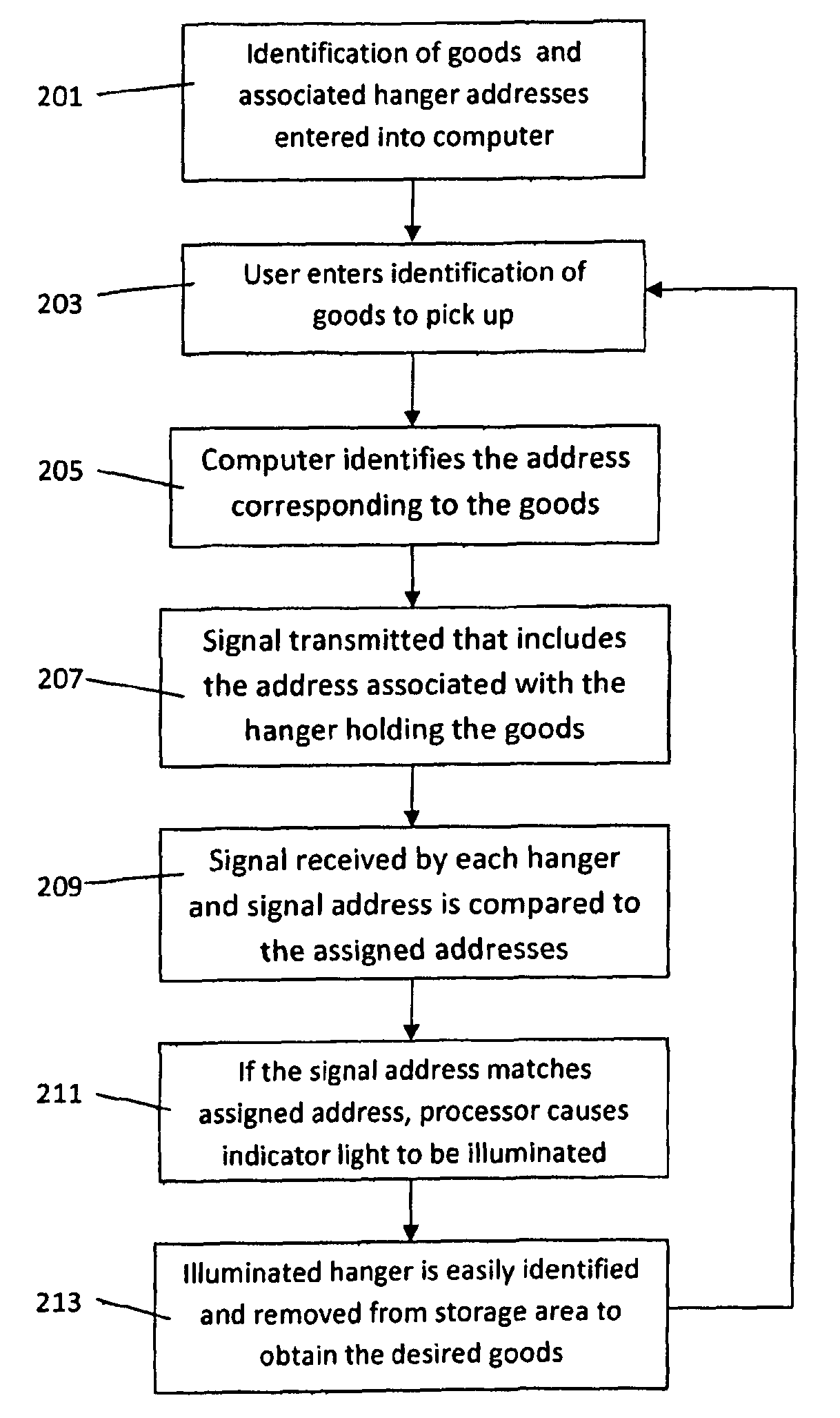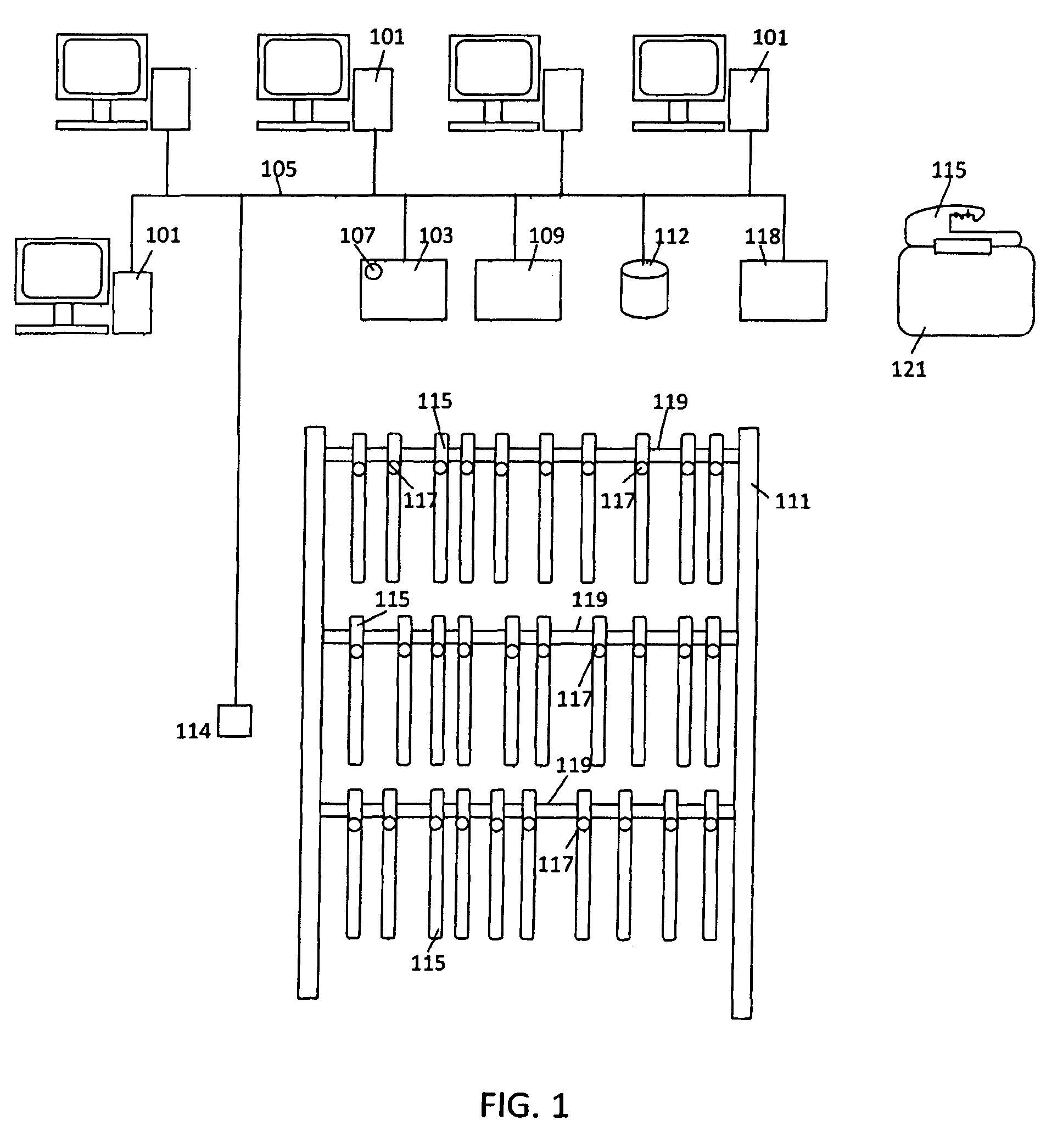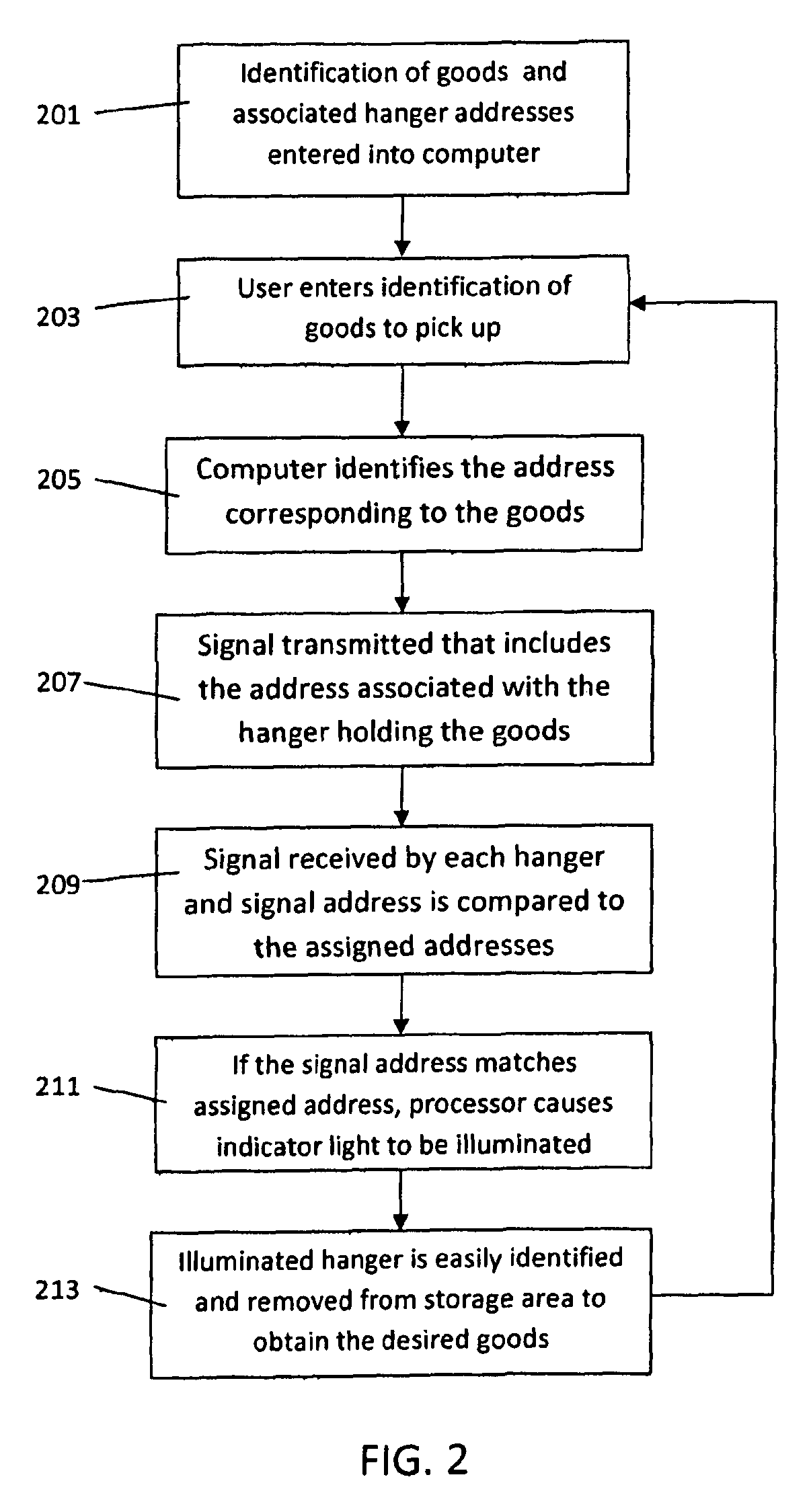Product storage and retrieval system
a product storage and product technology, applied in the field of product storage and retrieval system, can solve the problem that products cannot be placed in containers, and achieve the effect of easy identification and easy retrieval
- Summary
- Abstract
- Description
- Claims
- Application Information
AI Technical Summary
Benefits of technology
Problems solved by technology
Method used
Image
Examples
Embodiment Construction
[0034]The present invention is directed towards an apparatus and system for storing and locating products within a storage area. With reference to FIG. 1, in an embodiment the inventive system includes several separate components. The inventive system can be used with a computer network having a plurality of client computers 101. The clients 101 are coupled to one or more radio frequency (RF) transmitters or transceivers 103. One or more of the clients 101 can be an administrative computer that controls the operation of the inventive system. The RF transmitters or transceivers 103 may be coupled to one or more status lights 107 which can indicate that the transceiver 103 is operating properly. For example, a green light may be illuminated when the transceiver 103 is connected to the network. A red light may indicate that the transceiver is powered and functional. The red light may blink when there is an error in the system. A yellow light may indicate that the wireless receiver is e...
PUM
 Login to View More
Login to View More Abstract
Description
Claims
Application Information
 Login to View More
Login to View More - R&D
- Intellectual Property
- Life Sciences
- Materials
- Tech Scout
- Unparalleled Data Quality
- Higher Quality Content
- 60% Fewer Hallucinations
Browse by: Latest US Patents, China's latest patents, Technical Efficacy Thesaurus, Application Domain, Technology Topic, Popular Technical Reports.
© 2025 PatSnap. All rights reserved.Legal|Privacy policy|Modern Slavery Act Transparency Statement|Sitemap|About US| Contact US: help@patsnap.com



